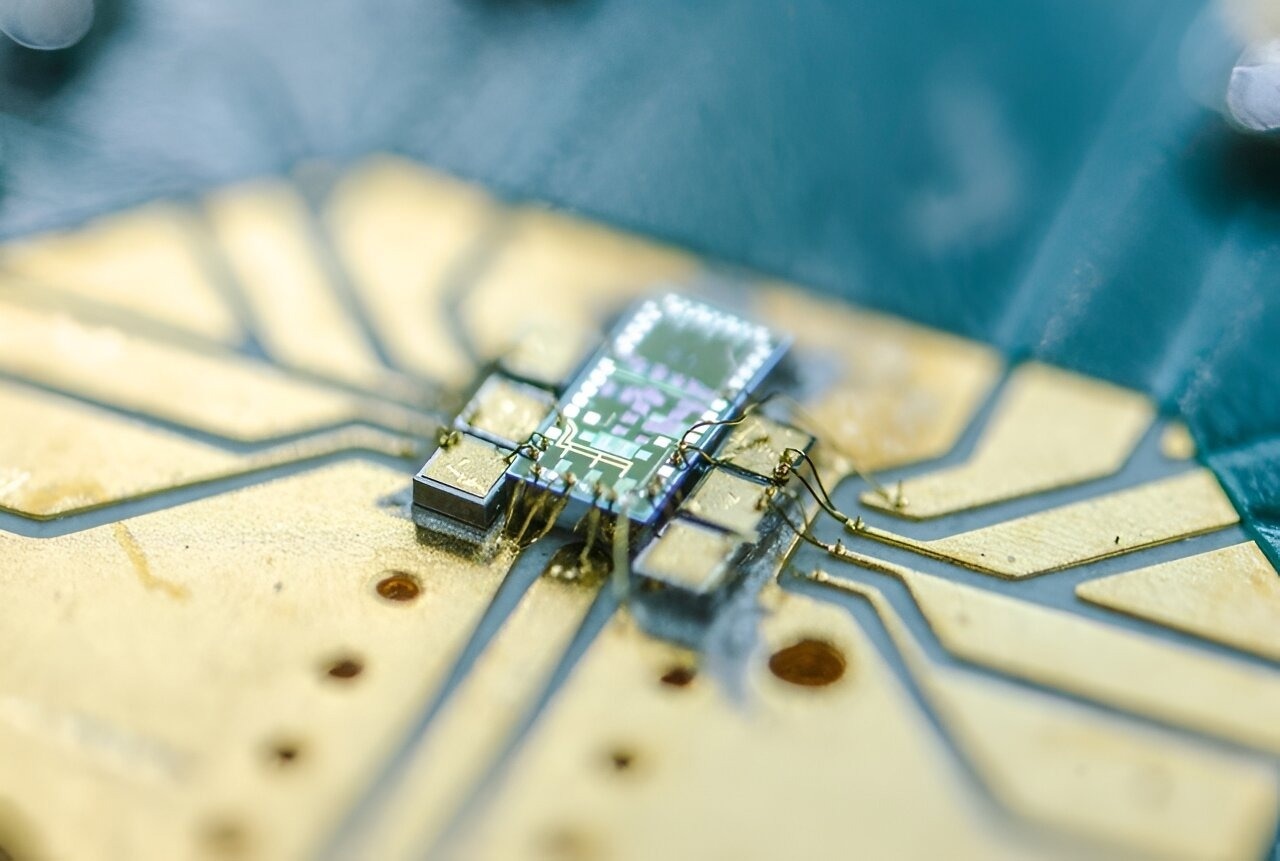Reviewed by Lexie CornerMay 20 2024
Researchers at the University of Bristol have integrated the world's smallest quantum light detector into a silicon chip, marking a significant advancement in the scaling of quantum technology. The study was published in Science Advances.
 The silicon ePIC quantum chip is mounted on a printed circuit board for testing and is similar to a motherboard. Image Credit: University of Bristol
The silicon ePIC quantum chip is mounted on a printed circuit board for testing and is similar to a motherboard. Image Credit: University of Bristol
The discovery that transistors could be miniaturized onto inexpensive microchips was a pivotal step towards enabling the information age.
Researchers at the University of Bristol have successfully integrated a quantum light detector—smaller than a human hair—onto a silicon chip for the first time. This signifies an advancement toward the era of light-based quantum technologies.
Realizing the upcoming generation of advanced information technologies requires the large-scale production of high-performance electronics and photonics. Implementing quantum technologies in currently available commercial facilities is a global endeavor that universities and businesses worldwide are undertaking.
Given the enormous number of components required to assemble even a single machine, the ability to produce high-performance quantum hardware at scale may prove essential for quantum computing.
To achieve this goal, University of Bristol researchers have demonstrated a quantum light detector implemented on a chip with a circuit measuring 80 µm by 220 µm.
The ability of the quantum light detector to operate quickly is crucial because it unlocks the possibility of high-speed quantum communications and optical quantum computers.
Utilizing well-established and widely available fabrication processes enhances the likelihood of early integration with other technologies, such as communications and sensing.
These types of detectors are called homodyne detectors, and they pop up everywhere in applications across quantum optics. They operate at room temperature, and you can use them for quantum communications in incredibly sensitive sensors—like state-of-the-art gravitational wave detectors—and there are designs of quantum computers that would use these detectors.
Jonathan Matthews, Professor, Lead Researcher and Director, Quantum Engineering Technology Labs
The Bristol group demonstrated in 2021 how quantum light detectors could be made faster by connecting a photonics chip to a separate electronics chip. Using a single electronic-photonic integrated chip, the team has since increased speed by an additional factor of 10 and decreased footprint by a further factor of 50.
These detectors are small, quick, and sensitive at the same time.
The key to measuring quantum light is sensitivity to quantum noise. Quantum mechanics is responsible for a minute, fundamental level of noise in all optical systems. The behavior of this noise reveals information about what kind of quantum light is traveling in the system. It can determine how sensitive an optical sensor can be, and it can be used to mathematically reconstruct quantum states. In our study, it was important to show that making the detector smaller and faster did not block its sensitivity for measuring quantum states.
Dr. Giacomo Ferranti, Study Author, University of Bristol
The authors underscore the need for more research to integrate other disruptive quantum technology hardware down to the chip scale. The new detector needs to be more efficient, and research needs to be done to test the detector in a variety of applications.
Professor Matthews added, “We built the detector with a commercially accessible foundry in order to make its applications more accessible. While we are incredibly excited by the implications across a range of quantum technology, it is critical that we, as a community, continue to tackle the challenge of scalable fabrication of quantum technology. Without demonstrating truly scalable fabrication of quantum hardware, the impact and benefits of quantum technology will be delayed and limited.”
Journal Reference:
Frazer, J., et al. (2024) A Bi-CMOS electronic photonic integrated circuit quantum light detector. Science Advances. doi.org/10.1126/sciadv.adk6890.